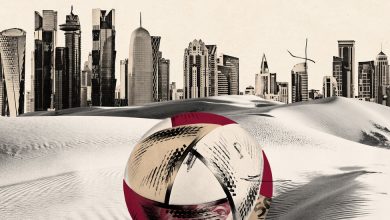The (No Longer) Secret World of Surf Spots

As one of the world’s most productive wave hunters, Josh Mulcoy is used to keeping his discoveries to himself, whether it’s a remote beach or in his backyard of Vancouver Island, British Columbia. But nowadays, Mulcoy, a professional surfer and photographer, takes more care than ever about what information he shares — and what he doesn’t.
“If I know of something and I want to keep it a secret, I pretty much don’t tell anyone, except one or two friends — and we have a pact where we don’t tell anyone else,” he said.
Publicizing certain surf spots, and especially ones off the beaten path, is similar to violating the first rule of Fight Club. You just don’t talk about certain surf spots. For years, surfers, surf magazines and surf photographers mostly lived by that unwritten law in order to keep surfing’s secret spots secret. Don’t take photos, and if you must, don’t identify it by anything more specific than the region, the country or even the continent.
The consequences for violating those rules could sometimes conjure a real-life Fight Club: Those who spoke or published photos of certain waves suffered threats, harassment, vandalism or even assault.
Dozens of surf breaks around the world have been transformed after their locations were shared with the world. Teahupoo, a famous surf spot in Tahiti, which will host the surfing competition at the 2024 Olympic Games, was once a secret wave. Salina Cruz, Mexico, is now a tourist destination and home to a surf camp. And already popular waves, like Rincon and Lower Trestles in California, have become impossibly crowded.
But then Instagram came along. Its geotagging feature can pinpoint the exact location of a photo. It has affected many natural spaces, from once quiet national parks such as Joshua Tree to formerly hidden waterfalls everywhere, which are now overrun with crowds, cars, noise and trash, leading to rules, fences and even closures.
Surfing’s response to the phenomenon was always going to be a bit different, though. The sport has treated both knowledge and waves, whether in San Diego or semirural Oregon, as things that are earned, not given — the way fishermen hold dear the locations of secret fishing holes.
Exposing a well-kept wave brings attention, which brings crowds. An overcrowded wave means fewer waves for everyone, and the one-surfer-per-wave etiquette tends to break down, leading to accidents and confrontations. Some surfers have long guarded against this situation by enforcing their own rules at their local spots, deciding who can catch waves and making those rules crystal clear to newcomers.
The ongoing coronavirus pandemic has added to the upheaval brought on by social media as more new surfers paddle out into local lineups without learning the local etiquette. The exploration and rites of passage it took to find these places, their secrecy or access held down across generations of surfers in some cases, can vanish with one overeager Instagram post. And one geotagged Instagram post begets another and another.
“There are people who feel like they’ve tended a garden for years, and then you come in with a dirt bike and do some doughnuts and peel out in it, kicking up dirt in their face,” said Devon Howard, the former editor of Longboard magazine and a figurehead in surfing.
Dropbox, a fun, formerly quiet spot near Mulcoy’s home in Tofino, is now so crowded he doesn’t bother surfing there. If someone shares a photo of the wave firing one day, the break is packed with new surfers the next, he said.
Some photographers have shifted their careers to respect local breaks. Chris Burkard, an outdoor photographer with 3.8 million Instagram followers, gained fame for photographs of extremely remote locations. It wasn’t his original plan: The Central Coast of California, where he’s from, is full of great waves — but ill will toward anyone photographing them.
“One of the reasons I was drawn to remote, wild places is I was so sick of dealing with things at home,” Burkard said, using an expletive, as he cited having his car vandalized and receiving death threats.
He and other photographers see no reason to name a location, even if it’s photographed.
“To me the mystery and anonymity of the surf experience is critical,” Burkard continued. “When I grew up seeing these remote beaches on the cover of Surfer, and all you were given was the name of a country, that was so cool. What started me wanting to do this as a career was literally that lack of information.”
In the digital age, surfing’s old guard still exercises discretion. Grant Ellis, the photo editor at The Surfer’s Journal and former photo editor of Surfer, takes extra care when publishing photos of certain waves. He’ll crop out identifying land features, run photos of waves out of season, or simply wait long enough for a sandbar to shift — allowing locals to enjoy the wave while it’s good. Those publication strategies can conceal the particular wind and swell directions that make the wave especially great, something only people who’ve studied the wave for years might understand.
But even if waves get steadily exposed and overcrowded one by one, Mulcoy is confident that world-class waves still remain hidden all over the globe. The only people who surf them, he said, are those who keep them secret.
“There are guys that know about waves that would blow people’s minds, but they keep it to themselves,” Mulcoy explained. “And I’m so stoked for them — I don’t even want to know where they’re at!”





